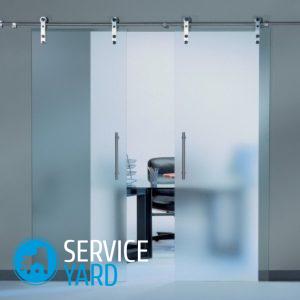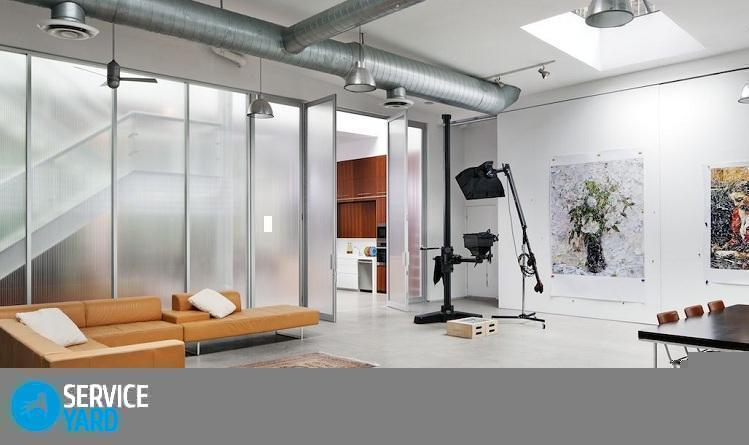How to make glass frosted at home?

Frosted glasses in everyday life are no less popular than ordinary ones. The velvety surface looks unusual and very beautiful. Window and door inserts, decor for cabinet furniture, utensils, lamps - this is far from a complete area of use. From this article you will learn how to make glass frosted at home to give the interior more originality and softness.
to contents ↑Matting technology
There are such methods:
- Using sandblasting equipment.
- With the use of chemicals.
- Mechanical impact on the surface.
to contents ↑Important! The first method is used in industry. The remaining two are quite suitable for making frosted glass at home, provided that you follow the procedure.
Sand use
In this case, frosting the glass with your own hands involves the presence of a special machine or sandblasting apparatus. If you use the machine, then with the help of water and a trickle of sand a matte surface is obtained, which is able to maintain its texture for a long time.
Unlike the machine, the sandblasting gun works with the help of dry sand, which is fed from the nozzle under high pressure. This method has a limited scope. It can be used only for glasses with a thickness of 5 mm or more, since a 3 mm layer is removed during processing.
to contents ↑Important! This technique is the most expensive, it requires a special room and devices to protect the master from glass dust. A significant disadvantage is the high energy intensity of this method. Most of the equipment is powered by a three-phase current of 380 V. In addition, it is necessary that the grains of sand be the same size. Too large a grain of sand can leave noticeable damage on the surface or completely break the glass.
Chemical way
This is a much more affordable technique for those who are interested in making frosted glass with their own hands. The chemical technique is also called etching, since after applying special means, the upper part of the glass is opaque.
Important! The method is available with the caveat that at home only a non-toxic solution or paste can be used. In this case, you can make a surface with a different degree of transparency. Most of the funds are based on 40% hydrofluoric acid.
DIY glass matting paste is the most common option. It is applied with a spatula, it is also removed very simply. The exposure time is indicated on the package. The thickness of the applied paste layer is about 4 mm.
Important! A variation of the chemical method is the application to the surface of white or translucent minute particles of paint from polyurethanes. Following application, the glass is dried in a chamber specially designed for this purpose. The disadvantage of this method is that the applied paint is quickly erased.
Self-made matting paste
There are 2 ways to independently make such a composition:
- With liquid glass.
- With hydrofluoric acid.
Liquid Glass Paste:
- Dilute “water glass” with a little distilled water.
- Add tooth powder to the mixture and mix until smooth.
- Adding a small amount of ultramarine or meerk gives a tinting effect.
- Apply the resulting paste with a velor roller.
- Rinse off with warm water after drying.
Important! Apply matting pastes only on dry clean glass.
Hydrofluoric Acid Paste
You will need:
- Distilled water - 25 parts.
- Sodium fluoride - 2 parts.
- Gelatin - 1 part.
How to cook and apply:
- Stir all the ingredients until a homogeneous mass is obtained.
- Apply the mixture to the glass with a roller and rinse with water after drying.
- After drying, treat the surface with 1% hydrochloric acid for 1 minute. As a result of a chemical reaction, hydrofluoric acid is formed, which creates a matte effect.
to contents ↑Important! You can not use this tool for applying drawings, since it flows under the stencil.
Mechanical method
Its essence lies in the engraving and polishing of glass. This is a fairly effective way, since glass retains its original appearance for a long time and looks beautiful.
What is the difference between engraving and grinding:
- Fine sand and special grinding wheels are used for grinding. In the process, water is used, since grinding produces a lot of dust, including glass.
- Engraving is done using a nozzle. When pressed on the glass, a rough trace remains. Engraving is used to apply drawings and inscriptions.
to contents ↑Important! The easiest way for those interested in how to make glass frosted at home is to use films. Matting film is glued to the glass on the back side, and it ceases to be transparent. The disadvantage of using films is in a limited scope. The method can only be used on flat or slightly rounded surfaces.
Care
How to make frosted glass, you learned. Now - about the care of the frosted surface. Processed glass requires more care than usual. The smallest chips on the surface retain dirt, which is worth considerable work to remove. When buying detergents, be sure to familiarize yourself with their composition and basis:
- You can not use drugs that have silicone and fluorine in their composition.
- Well suited for the maintenance of frosted glass water with the addition of a small amount of vinegar.
- Microfiber cloths or wipes are best suited for wiping surfaces. suede.
Stock footage
That's all you need to know about frosting glass, if you decide to make it at home. Take advantage of this information by practicing initially on unnecessary pieces of glass, and when you hone your skills, feel free to proceed with decorating your intended surface.
- How to choose a vacuum cleaner taking into account the characteristics of the house and coatings?
- What to look for when choosing a water delivery
- How to quickly create comfort at home - tips for housewives
- How to choose the perfect TV - useful tips
- What to look for when choosing blinds
- What should be running shoes?
- What useful things can you buy in a hardware store
- Iphone 11 pro max review
- Than iPhone is better than Android smartphones




